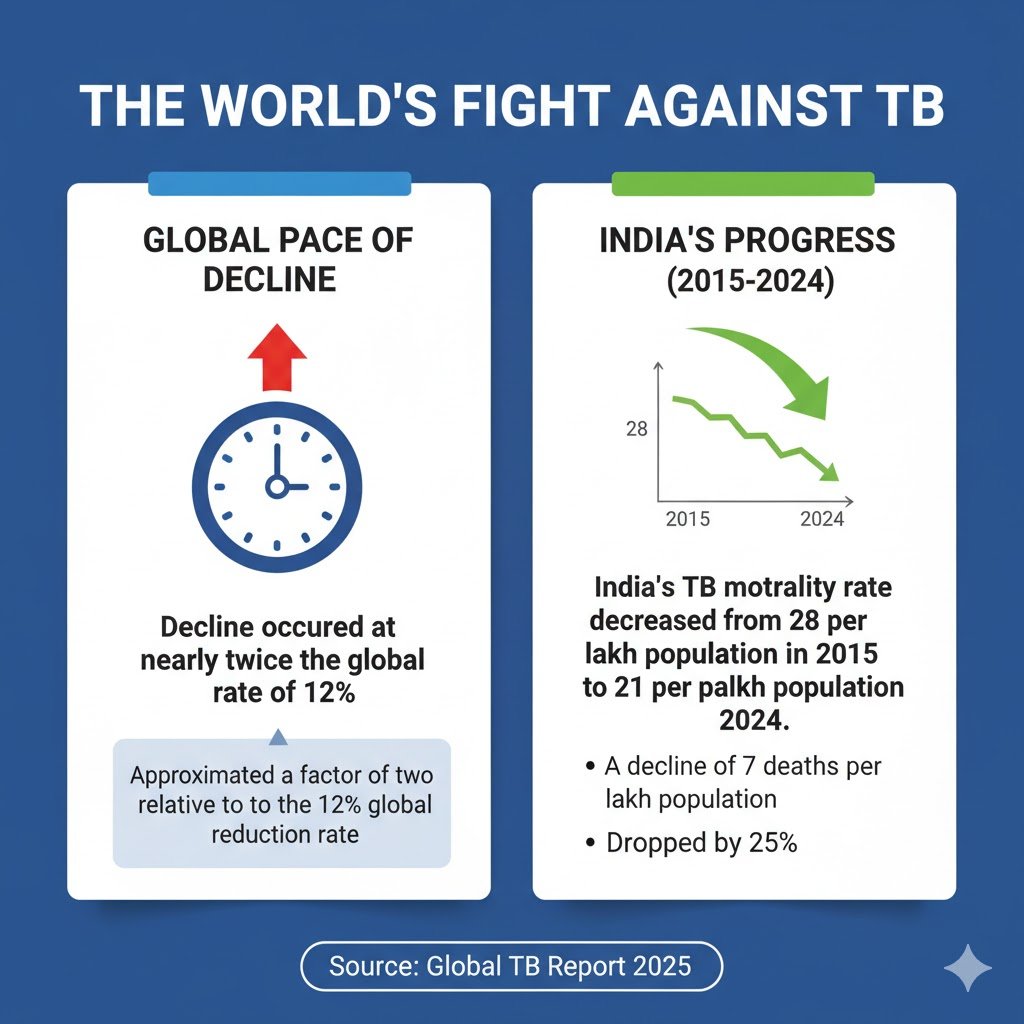The World’s Fight Against Tuberculosis: WHO 2025 Report

The World Health Organization’s released Global Tuberculosis Report 2025. India’s TB incidence (new cases emerging each year) reduced by 21%. It declined from 237 per lakh population in 2015 to 187 per lakh population in 2024. The decline occurred at nearly twice the global rate of 12%. India treatment coverage surged to over 92% in 2024, from 53% in 2015.
Between 2015 and 2024, India successfully lowered its TB mortality rate from 28 to 21 per lakh population.
LEARNING FROM HOME/ WITHOUT CLASSES / BASICS
Tuberculosis
Tuberculosis (TB) caused by a bacterium called Mycobacterium tuberculosis. The bacteria usually attack the lungs, but they can attack any part of the body, such as the kidney, spine, and brain. Not everyone infected with TB bacteria becomes sick. As a result, two TB-related conditions exist: latent TB infection (LTBI) and TB disease. If not treated properly, TB disease can be fatal. Tuberculosis is curable and preventable.
TB spread from person to person through the air. When people with lung TB cough, sneeze or spit, they propel the TB germs into the air. A person needs to inhale only a few of these germs to become infected.
When a person develops active TB disease, the symptoms (cough, fever, night sweats, weight loss, etc.) may be mild for many months. This can lead to delays in seeking care and results in transmission of the bacteria to others. People with active TB can infect 10-15 other people through close contact over the course of a year.
Tuberculosis in India continues to be the leading cause of death from communicable diseases. With 1,000 deaths per day or two persons succumbing to this deadly lung disease every three minutes, 2.2 million TB cases occur in India every year. However, with the successful implementation of DOTS in India, there has been a significant rise in the overall treatment rate. DOTS – Directly Observed Treatment, Short-Course is the WHO-recommended strategy for tuberculosis control. It provides a definite cure for tuberculosis with a treatment course lasting from six to eight months. It is available free of cost to patients in government hospitals throughout the nation.
In India, the Revised National TB control programme (RNTCP) shifts the responsibility for cure from the patient to the health system. DOTS shown to prevent the occurrence of multi-drug resistant tuberculosis (MDRTB). It also reverses the trend of MDRTB in the suspected population and can cure TB even in HIV-positive patients.
Decentralization of healthcare services through over 1.7 lakh Ayushman Arogya Mandir
The government is procuring over 800 AI-enabled portable chest x-ray machines to complement to the India’s extensive TB laboratory network
To ensure government target of elimination TB by 2025, we need to augment not just our curative but also detection capabilities.Along with on symptomatic screening we must heavily rely on portable AI-enabled X-Ray applications.





0 Comments